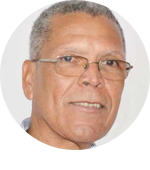
THE second tragedy to befall St. Jude Hospital following the fire of 2009 arises from the notion that Vieux Fort requires a state-of-the-art hospital for satisfaction of the south’s health service requirements.
It is a tragedy, as while we know that we cannot afford one state-of-the-art hospital, the new Owen King-EU Hospital in Castries, successive governments have considered construction of a second in Vieux Fort.
At his September 19, 2016 press conference, Prime Minister Allen Chastanet indicated that he had to find an additional EC$30 million required by the Ministry of Health for the OK-EU’s operation. One year later, this hospital still cannot be opened, yet this Government continues to consider abandoning the near EC$100 million already spent on St. Jude, finding EC$100 million more to build a new state-of-the-art hospital, and then somehow finding enough money to operate both facilities.
While the current UWP administration is guilty of promoting this idea of a “first class, state-of-the-art” hospital for the south, this idea was also contained in the pamphlet, “Rising from the Ashes”, published by the then UWP government in 2010. Then, the government intended to build a new hospital that would provide “Specialized medical care for St. Lucia and the region”.
This idea also provided the rationale for the increase in the scope of works and cost of this project under the SLP administration. During his media tour reported on June 28, 2012, former Prime Minister Dr. Kenny Anthony announced that the reconstructed St. Jude would cost EC$60 million, youtube.com/watch?v=R4oJhm3kCK8, (0:36 mins.). At that time, Dr. Anthony also expressed satisfaction with the facilities to be provided at the rebuilt hospital.
But by September 2013, Dr. Anthony was able to announce that “the total projected cost of the fully-commissioned hospital will be over EC$150 million, or nearly the same cost of the new national hospital”, youtube.com/watch?v=ChhyLNG2KKY, (1:59 mins.).
Both parties, then, can be seen to be promoting this idea of a state-of-the-art hospital for Vieux Fort, although both are painfully aware that the country cannot afford it. But it makes for good politics, and so neither party has ever bothered to attempt to justify it.
One suggested justification for this requirement is that the international airport is located in Vieux Fort. But in the event of a plane crash involving say, 200 passengers, the Accident & Emergency Department would be quickly overwhelmed, and this leads to the question of transportation of the injured.
In lending its support to proposed legislation in the US, the Association of Air Medical Services there claims that the new legislation will “Preserve access for almost 1/3 of the American population who don’t live within an hour of a Level 1 or Level 2 Trauma Center (by ground transport)” (http://aams.org/h-r-3378-ensuring-access-air-ambulance-services-act-2017/). Road travel time from Hewanorra to OK-EU Hospital falls within this one-hour reference time.
It will be for our medical professionals to advise us on the appropriate levels of service to be provided at St. Jude when the OK-EU Hospital is in operation. Meanwhile, it would seem that road ambulance transfer of emergency and specialist care patients from St. Jude to OK-EU Hospital should be acceptable, particularly if the road is realigned and improved. In the event of a mass casualty event at Hewanorra International Airport, a regional response, inclusive of the provision of airlift, may be required.
It is politics, then, that is at the heart of this drive by both political parties for provision of a state-of-the art hospital in the south, not medical need. And it is politics, too, which is fuelling this ongoing scandal surrounding St. Jude.
Following the September 2009 fire, the then UWP administration decided to rebuild the burnt-out operating theatres and surgical ward on the original site and to renovate the two wings of the hospital. That decision was made with the agreement of the Board and Management of St. Jude, as confirmed recently by then Chairman Percival Mc Donald. Dr. Chierry Poyotte, CEO of St. Jude, also confirmed this preference for reconstruction at the original site during a site visit on February 20, 2014, youtube.com/watch?v=XgbeGukUvvU, (2:01mins.).
Reconstruction within the existing footprint of St. Jude, however, also established the constraint that has led to many of the criticisms today.
These videos, dated September 8 and 14, 2011, show new columns being erected within the external walls of existing buildings youtube.com/watch?v=b0WIOXgJMeY, (1:45 mins.), youtube.com/watch?v=_y8KWK3Fj9A, (0:17 mins.). Those new columns must have had some impact on the layout of the floors, but these conditions have existed since the UWP administration of 2011.
Those who now take issue with this hospital reconstruction project are only suggesting that, with 20/20 hindsight, a better outcome could have been achieved if the original facility had been completely demolished and a new hospital built.
But with a crisis on its hands and little money available after the fire, Government chose the best option available to it at that time. Today, we have even less money.
Next week, we look at some of those (false) criticisms of the reconstruction of St. Jude.












